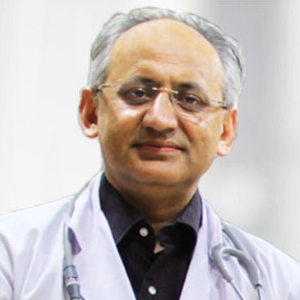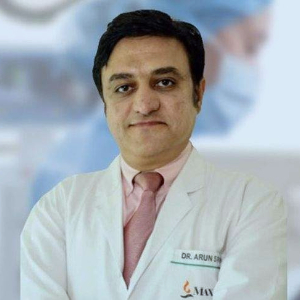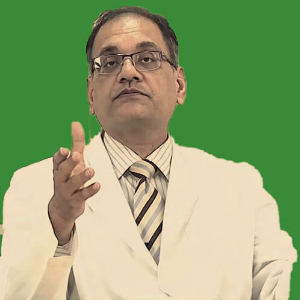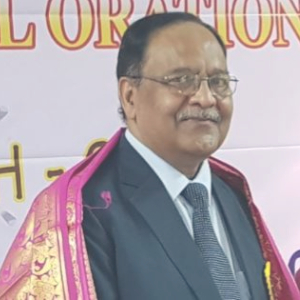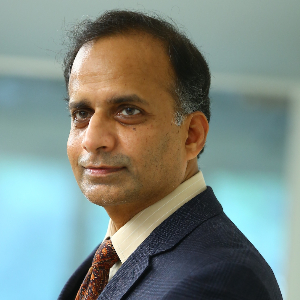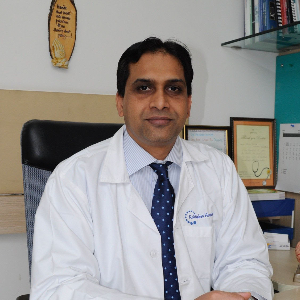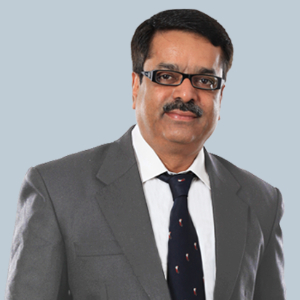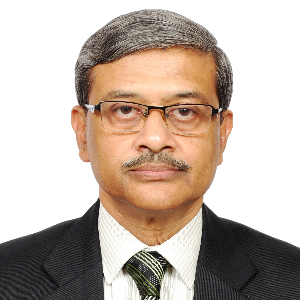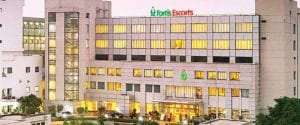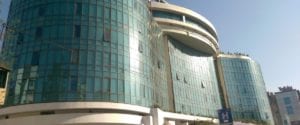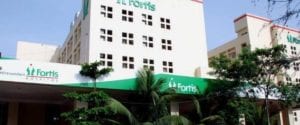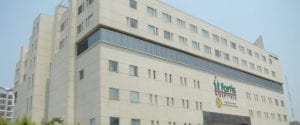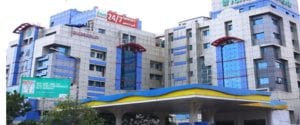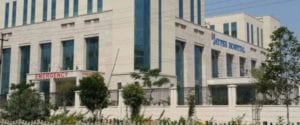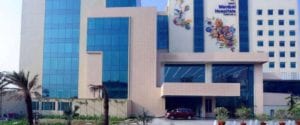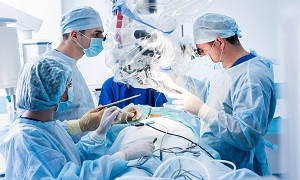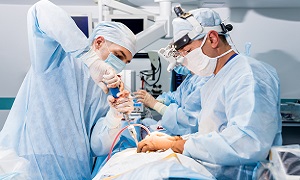Best Spinal Cord Stimulator Implant Doctors in India
- Orthopedic Surgeon, Gurugram, India
- Over 25 years’ experience
Profile Highlights:
- Dr. Ravi Sauhta is a renowned Orthopedic Surgeon in India with 25+ years of experience in Joint Replacement and Reconstruction surgeries.
- He was the first surgeon in India to use minimally invasive AO techniques for trauma and also introduced reconstructive pelvic acetabular surgery and reconstructive bone tumor surgery in 1995.
- Pediatric Orthopedic Surgeon, Gurugram, India
- Over 24 years’ experience
Profile Highlights:
- Dr. Sanjay Sarup is a leading Orthopedic Surgeon with over 24 years of experience during which he has been associated with the best hospitals in the country.
- He performs a number of orthopedic procedures that includes surgery for correcting Scoliosis and Kyphosis, Club foot, dislocated hips, and hip deformity since birth among several other procedures.
- Dr. Sarup received his training in orthopedic surgery from leading hospitals in India and UK and holds a Fellowship of the Royal Hospital for Sick Children, Glasgow in Pediatric Orthopedics.
- Neurosurgeon, New Delhi, India
- Over 20 years’ experience
Profile Highlights:
- Dr. Arun Saroha is a renowned Neurosurgeon with extensive experience in the surgical treatment of all kinds of brain and spine disorders.
- He holds an experience of over 20 years in the field and has performed over 8000 neurosurgeries till date for different types of neuro and spinal diseases.
- Dr. Saroha is an expert in minimally invasive spine surgery, neuro-onco surgery, trauma surgery and is also among the few neurosurgeons with expertise in Pediatric neurosurgery.
- Orthopedic Surgeon & Spine Surgeon, Gurugram, India
- Over 25 years’ experience
Profile Highlights:
- Dr. Vineesh Mathur is an accomplished and renowned Orthopedic Surgeon in India specializing in Spine Surgery.
- He holds an extensive experience of 25+ years in the field of orthopedics and spinal surgery and has performed over 6000 independent surgeries till date.
- Dr. Vineesh Mathur is highly trained in all kinds of spinal procedures and received training in the procedures from distinguished institutes in India, Spain, Turkey, USA, South Korea, and Denmark
- Neurosurgeon, New Delhi, India
- Over 45 years’ experience
Profile Highlights:
- Dr. V K Jain is a leading neurosurgeon in India with refined medical surgical precision.
- Dr. Jain has worked in a variety of significant positions in hospitals all across the world over the course of his career.
- Dr. Jain has also served as a visiting professor at a number of prestigious hospitals throughout the world.
- He has also attended many conferences, workshops, and seminars and has also been invited as faculty to many conventions both in India and abroad.
- Neurosurgeon, New Delhi, India
- Over 30 years’ experience
Profile Highlights:
- With a super-specialization in Neurosurgery, Dr. S K Sogani is one of the most accomplished neurosurgeons in Delhi and NCR.
- His interest lies in tumor removal surgery, skull base surgery, brain stroke surgery, head injury, micro neurosurgery, different types of spine surgery, and emergency trauma surgery.
- Orthopedic surgeon, Chennai, India
- Over 35 years’ experience
Profile Highlights:
- Dr. A B Govindaraj is a leading Orthopedic surgeon who holds an extensive experience of more than 3 decades in the field and performs over 300 joint replacement surgeries annually.
- He excels in unilateral and bilateral total knee replacement, total hip replacement, and shoulder replacement surgeries.
- Neuro Surgeon & Spine Surgeon, Mumbai, India
- Over 26 years’ experience
Profile Highlights:
- Dr. Abhaya Kumar is a leading name in the field of Neurosurgery who is an expert in Minimally Invasive Spine Surgery, Brain surgery, and Stereotactic Radiosurgery and has performed more than 1400 spine surgeries and 1100 brain surgeries in KDAH alone.
- Dr. Abhaya Kumar’s primary focus includes Minimally Invasive Spine Surgery (MISS) and has handled over 800 MISS cases till date in the hospital with 96% successful results.
- Neurosurgeon, Mumbai, India
- Over 25 years’ experience
Profile Highlights:
- Dr. Ashok Hande is a renowned neurosurgeon in Mumbai who holds the credit for 300 AVMs, 1400 skull base tumor surgeries, 3600 surgeries for cranial and spinal trauma, 1200 lumbar prolapsed intervertebral disc surgeries, 800 cerebral aneurysms, and more than 100 microvascular decompressions.
- He holds an experience encompassing 25+ years and holds the credit for pioneering neurosurgery in Mumbai by bringing in new and advanced neurosurgical procedures for brain and spine surgery.
- Neurosurgeon, Mumbai, India
- Over 28 years’ experience
Profile Highlights:
- Dr. Deepu Banerji is a leading name in the field of Neurosurgery in India and possesses extensive skills in minimally invasive and micro neurosurgery.
- He has been practicing neurosurgery for over 28 years and is counted among the best microscopic neurosurgeons in the country.
- Apart from minimally invasive surgeries, his expertise lies in skull base surgery, brain tumors surgery, vascular surgery, and spine surgeries, and has handled numerous cases of brain and spine diseases and disorders.
Best Spinal Cord Stimulator Implant Hospitals in India
Fortis Escorts Hospital, New Delhi
- City: New Delhi, India
Hospital Highlights:
- Over the last 33 years, the Fortis Escorts Heart Institute has set new standards in cardiac treatment with groundbreaking research. It is now known around the world as a centre of expertise for Cardiac Bypass Surgery, Interventional Cardiology, Non-invasive Cardiology, Paediatric Cardiology, and Paediatric Cardiac Surgery.
- The hospital has cutting-edge laboratories that perform a wide range of diagnostic tests in Nuclear Medicine, Radiology, Biochemistry, Haematology, Transfusion Medicine, and Microbiology.
- Fortis Escorts Heart Institute boasts a diverse group of bright and experienced doctors who are backed up by a team of highly qualified, experienced, and devoted support professionals as well as cutting-edge equipment such as the recently installed Dual CT Scan.
- Approximately 200 cardiac doctors and 1600 personnel currently collaborate to manage over 14,500 admissions and 7,200 emergency situations each year. The hospital now has a 310-bed infrastructure, as well as five cath labs and a slew of other world-class amenities.
Rela Hospital, Chennai
- City: Chennai, India
Hospital Highlights:
- RIMC is a multi-specialty hospital in a sprawling area of 36 acres located in Chromepet, Chennai, Tamil Nadu, India.
- The facility has 450 beds including 130 critical care beds, 9 operating rooms, modern reference laboratories and radiology services, and is conveniently located near road, rail and air transportation.
- RIMC is led and managed by world-renowned physicians committed to healthcare.
- RIMC offers the broadest range of clinical care, education, and research. The hospital offers state-of-the-art technology and modern treatment facilities designed to provide health care at an affordable cost.
- Rela Institute is driven by patient needs, comfort and confidence.
CARE Hospitals, Hyderabad
- City: Hyderabad, India
Hospital Highlights:
- CARE Hospitals were established in the year 2000, by CARE Group.
- The multispecialty hospital has 435 beds, including 120 critical care beds, with an annual inflow of 180000 outpatients and 16,000 in-patients.
- The hospital provides specialty medical services in Cardiology, Cardiothoracic Surgery, Pediatric Cardiology, Pediatric Cardiothoracic Surgery, Neurology, Neurosurgery, Nephrology, and Urology.
- The hospital has the first dual source, 128 slice CT scanner (for high precision cardiac imaging) – the first of its kind in south India.
- The hospital offers a wide range of accommodation facilities for the convenience of its varied patient base, ranging from general wards to super deluxe rooms.
Fortis Hiranandani Hospital, Mumbai
- City: Mumbai, India
Hospital Highlights:
- Fortis Hiranandani hospital was established in 2007.
- The hospital is an advanced tertiary care, multi-specialty hospital equipped with 149 beds.
- The hospital is equipped with a super ICU to provide emergency medical care to critically ill patients.
- The hospital is NABH accredited.
- The critical care facility in the hospital is augmented with the state-of-the-art facilities that facilitate speedier diagnosis and efficient monitoring.
- The hospital provides specialty medical services in cardiology, orthopedic science, pediatric science, neurology, diabetic care, urology, nephrology, ENT, obstetrics, gynecology, cosmetic surgery, bariatric surgery, neuro and spine care.
Fortis Hospital, Anandpur, Kolkata
- City: Kolkata, India
Hospital Highlights:
- Fortis Hospital, Anandapur, Kolkata is a world-class super-speciality equipped with the latest technologies in the medical world.
- The hospital is NABH accredited.
- This state-of-the-art facility specializes in cardiology and cardiac surgery, urology, nephrology, neurosciences, orthopaedics, digestive care, emergency care and critical care.
- The hospital, governed by integrated Building Management System (IBMS), has a pneumatic chute system, for quick vertical and horizontal transportation between floors, facilitating speedy transfer of patient specimens, documents, reports, and medicines to the concerned departments.
- The hospital also has a nephrology department with over 28 advanced dialysis units.
Fortis Hospital Banerghatta, Bengaluru
- City: Bengaluru, India
Hospital Highlights:
- Fortis Hospital Bannerghatta, Bengaluru was established in 2006.
- The hospital is a 276 bedded multi-specialty tertiary care facility.
- The hospital specializes in cutting-edge medical technology and dedicated patient care services.
- The hospital is equipped with state-of-the-art technologies like trans-radial angioplasty, trans-abdominal cardiac surgery, and computerized TKR navigation surgery.
- The hospital provides specialty medical services in cardiology, cardiac surgery, orthopedics, neurology, neuro-surgery, GI, and Minimal Access Surgery (MAS).
Fortis Hospital, Malar, Chennai
- City: Chennai, India
Hospital Highlights:
- Fortis Malar was established in 1992 and was formerly known as Malar Hospital.
- The hospital specializes in cutting-edge medical technology and dedicated patient care services.
- The hospital is multi-specialty, tertiary care facility with 180 beds.
- The hospital offers comprehensive medical care in specialties such as cardiology, cardio-thoracic surgery, neurology, neurosurgery, orthopedics, nephrology, gynecology, gastroenterology, urology, pediatrics, and diabetes.
Gleneagles Global Hospital, Parel, Mumbai
- City: Mumbai, India
Hospital Highlights:
- Gleneagles Global Hospital The 450-bed facility comprises of 17-stories, housing state-of-the-art infrastructure, and advanced medical care facilities.
- The hospital offers end-to-end clinical, surgical, and diagnostic services. It is equipped with a team of eminent medical professionals aided by qualified nurses and medical staff
- The Hospital offers advanced Endoscopic procedures, Hepatobiliary and Liver Surgeries, Surgical and Medical Gastroenterology, Bariatric Surgery, and Robotic surgery.
- The hospital is a center of excellence for Orthopedics, Joint Replacement, Knee Replacement, and Hip Replacement surgery.
Jaypee Hospital, Noida
- City: Noida, India
Hospital Highlights:
- Jaypee Hospital is the flagship hospital of the Jaypee Group.
- This hospital has commissioned 525 beds in the first phase and has been planned and designed as a 1200 bedded multi-specialty facility.
- It holds the accreditation of the NABH and NABL.
- The hospital has state-of-the-art infrastructure equipped with the latest technologies and modern equipment like 64 Slice PET CT, Dual Head 6 Slice SPECT CT, Gamma Camera, and Da Vinci Robotic Surgery for comprehensive robotic surgical solutions.
- It has special Centers dedicated to the major specialties to provide hassle-free and high-quality clinical care.
Manipal Hospital, Dwarka, Delhi
- City: New Delhi, India
Hospital Highlights:
- Manipal Hospitals, Dwarka, is a super-specialty hospital in Dwarka, New Delhi, which is a part of Manipal Hospitals Group.
- The hospital aims to provide the best treatment on par with international standards at a fraction of the cost.
- Equipped with 380 beds, the hospital is also one of the new age hospitals which are equipped fully with state-of-the-art infrastructure, cutting-edge technology as well as the latest and advanced clinical practices. The hospital also has 13 modular Operation theatres with 118 beds which are solely meant for critical care.
- The hospital comprises internationally acclaimed doctors and highly professional and experienced hospital and medical staff who are able to provide preventive, therapeutic, and diagnostic services all under one roof.
Spinal Cord Stimulator
Spinal cord stimulator is an implanted device that can deliver low levels of electric signals directly into the spinal cord, which helps to relieve pain. Spinal cord stimulation is often used after nonsurgical pain treatment options fail to provide sufficient relief. Spinal cord stimulators require two procedures for testing as well as implanting the device, the trial and the implantation. It can help one to improve their overall quality of life and it also reduces the need to use any kind of pain medicines. It is typically used with other pain management treatments.
Purpose
Spinal cord stimulation is used if nonsurgical pain treatment options fail to provide enough relief. Spinal cord stimulators are used for treating or managing various types of chronic pain, which includes:
- Back pain, that continues even after surgery (failed back surgery syndrome)
- Post-surgical pain
- Heart pain (angina) untreatable by other means
- Arachnoiditis (painful inflammation of the arachnoid)
- Injuries to the spinal cord
- Peripheral vascular disease
- Nerve-related pain (which can include severe diabetic neuropathy and cancer-related neuropathy from radiation, surgery or chemotherapy)
- Complex regional pain syndrome
- Pain after an amputation
- Visceral abdominal pain and perineal pain
Spinal cord stimulation can help you improve your overall quality of life and sleep as well as reduce the need for pain medicines. It can be used along with other kinds of pain management treatments, which include medications, physical therapy, exercise and relaxation methods.
Spinal Cord Stimulator Types
Spinal cord stimulators can be of various types:
Conventional implantable pulse generator (IPG), a spinal cord stimulator which is operated by battery. During the operation, the batter is placed in the spine. When it runs out, the battery needs to be replaced with a different surgery. This device is usually a good choice for people who are experiencing pain in just one body part due to its lower electrical output.
Rechargeable IPG functions similarly to the conventional device. Its difference is that the battery can be recharged without the need for another surgery. As the energy source is rechargeable, these stimulators are able to put out more electricity. This option is better for people experiencing pain in the lower back or in one or both legs, as the signal can reach further.
Radiofrequency stimulator uses a battery located outside the body. Due to newer designs and better technology, this stimulator is used quite rarely today. It has rechargeable batteries and is similar to the rechargeable IPGs. It is a better option for people with pain in the lower back and legs due to the device’s power.
Your surgeon will be explaining how to operate the device as well as adjust the intensity of the electrical signal, which all three types of stimulators are able to support. Different stimulator settings are required for different body positions. One setting can work better for sitting and another one for walking.
In order to help you easily access the settings which are used mostly, most devices allow doctors to save two or three preset programs. Some newer devices feature several waveforms for electricity delivery, which includes high frequency, burst as well as high-density stimulation.
Procedure
The procedure for spinal cord stimulation requires two steps to test and implant the device: the trial and the implantation. It is usually performed on an outpatient basis.
Spinal Cord Stimulator Trial
The first step is considered a trial period. In this step, your surgeon will implant a temporary device which will be testing out. You will be guided by a particular kind of X-ray called fluoroscopy. Then your surgeon will carefully insert the electrodes in the epidural space of the spine. The location of your pain affects where these electrodes will be placed along the spine. Your surgeon may ask for your feedback during the procedure to position the electrodes in the most effective way.
This trial procedure usually requires just one incision in your lower back for placing the electrodes. The generator/battery will be outside your body, typically on a belt which you will be wearing around your waist.
For around a week, you will evaluate how well the device can reduce your pain. The trial can be considered a success if you experience at least a 50 percent reduction in your pain level.
However, if it is unsuccessful, the wires can be removed quite easily in the clinic without causing any damage to the spinal cord or nerves. If successful, then surgery will be scheduled to implant the device permanently.
Spinal Cord Stimulator Implantation
Next comes the permanent implantation procedure, where the generator will be placed underneath your skin and the trial electrodes will be replaced with sterile electrodes. Unlike the trial ones, these will need to be anchored by sutures so that their movement can be minimized.
Typically around 1-2 hours can be required for the implantation.
First local anesthesia will be administered, after which your surgeon will make one incision for holding the generator and another one for inserting the permanent electrodes. Fluoroscopy will also be used in order to determine where the electrodes need to be placed.
Once the generator and the electrodes are connected to and running, your surgeon will be closing the incisions.
Your surgeon might provide sedation so that you remain comfortable. He/she might also ask for your feedback during the placement of the electrodes.
Recovery
Once the anesthesia has worn off, most patients are able to leave the same day as their procedure. For several days after your surgery, your incisions can cause some pain. Dressings will be placed over your incision sites and they will remain for about 3 days. The incisions should heal within 15-30 days after the surgery.
Your doctor will next discuss your recovery plan with you and might recommend you lighter activity for around 2 weeks after the surgery.
After your surgeon approves you for any kind of regular activity, you will be able to return to work and drive again.
Risks and complications
Although rare, spinal cord stimulator surgery has few risks and complications. Few patients might experience any of the following:
- Bleeding
- Infection, which can occur in the first 15-60 days
- Device migration (i.e. the electrodes moving from their original location which can make the stimulator unable to block pain as effectively). This might require a follow-up surgery so that the electrodes can be put back in their proper spot.
- Device damage (e.g., sometimes, the stimulator can break due to a fall or intense physical activity).
- Dural puncture- The dura mater surrounds your spinal cord. Spinal cord stimulators are inserted in the epidural space, the area which is just outside your dura mater. If a needle or electrode goes too deep and pierces it, this can lead to cerebrospinal fluid leaking out. These punctures can lead to severe headaches.
- Spinal cord trauma- Although it is rare, spinal cord stimulator insertion can sometimes lead to nerve injury and sometimes even paralysis.
Before going through the operation, it is best to discuss with your doctor regarding the benefits and the risks of the procedure.

